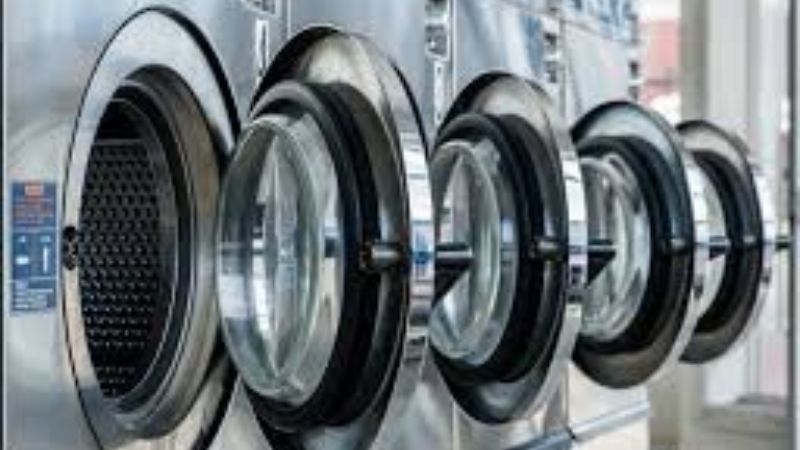Industrial Workwear Solutions
Industrial workwear is not just about uniforms; it’s a critical component of workplace safety and efficiency. Designed to protect workers from the hazards associated with various industrial environments, industrial workwear solutions include a wide range of garments and accessories, from high-visibility vests and flame-resistant clothing to hard hats and steel-toed boots.
In industries like construction, manufacturing, oil and gas, and mining, the right workwear is crucial for safeguarding employees from risks such as extreme temperatures, chemical exposure, electrical hazards, and heavy machinery accidents. Beyond safety, industrial workwear also plays a significant role in enhancing worker productivity, providing comfort, and maintaining professionalism in the workplace.
The Importance of Industrial Workwear
Industrial workwear is essential for several reasons, all of which contribute to the overall safety and well-being of workers:
- Safety Compliance:
Adhering to safety regulations is a top priority in industrial settings. Proper workwear ensures compliance with occupational safety standards set by regulatory bodies, reducing the risk of fines and legal issues for businesses.
- Protection from Hazards:
Workwear designed for specific industries can protect workers from a variety of hazards. For example, flame-resistant clothing shields workers from burns, while chemical-resistant suits prevent skin contact with harmful substances.
- Enhanced Visibility:
High-visibility clothing is crucial in environments where workers need to be easily seen, such as construction sites and roadwork areas. This type of workwear reduces the risk of accidents by making workers more visible to machinery operators and other team members.
- Comfort and Durability:
Industrial workwear is designed to be durable and comfortable, allowing workers to perform their tasks efficiently without discomfort or distraction. High-quality materials and ergonomic designs help maintain productivity throughout the workday.
- Professionalism and Branding:
Customized workwear featuring company logos and colors helps reinforce a professional image while promoting brand identity. It also fosters a sense of unity and belonging among employees.
Key Components of Industrial Workwear
Industrial workwear encompasses a wide range of garments and accessories, each designed to address specific needs and risks in the workplace. Some of the key components include:
Flame-Resistant Clothing (FRC):
- Importance:
FRC is essential in industries where workers are exposed to fire hazards, such as oil and gas, electrical, and welding sectors.
- Features:
Flame-resistant fabrics, reinforced seams, and heat-resistant closures help protect workers from burns and other heat-related injuries.
High-Visibility Clothing:
- Importance:
High-visibility garments are crucial in low-light environments or where workers need to be easily seen, such as construction sites and roadwork zones.
- Features:
Reflective strips, bright colors (typically neon yellow or orange), and lightweight, breathable materials enhance visibility and comfort.
Protective Footwear:
- Importance:
Industrial footwear protects workers’ feet from heavy objects, sharp debris, and hazardous chemicals.
- Features:
Steel-toed boots, slip-resistant soles, and puncture-resistant materials are standard in industrial footwear.
Chemical-Resistant Clothing:
- Importance:
This type of clothing is essential in environments where workers handle hazardous chemicals or are exposed to toxic substances.
- Features:
Chemical-resistant fabrics, sealed seams, and protective gloves prevent skin contact with harmful chemicals.
Hard Hats and Helmets:
- Importance:
Head protection is crucial in industries where workers are at risk of falling objects or head injuries.
- Features:
Impact-resistant materials, adjustable straps, and comfortable liners ensure a secure fit and adequate protection.
Cut-Resistant Gloves:
- Importance:
Cut-resistant gloves are essential for workers handling sharp tools or materials, such as glass, metal, or knives.
- Features:
Reinforced fibers, ergonomic designs, and varying levels of cut resistance cater to different industrial needs.
Respiratory Protection:
- Importance:
Respiratory protection is necessary in environments with airborne hazards, such as dust, fumes, and toxic gases.
- Features:
Respirators, masks, and ventilation systems help filter out harmful particles and gases, protecting workers’ lungs.
Coveralls and Overalls:
- Importance:
Coveralls and overalls provide full-body protection, shielding workers from dirt, chemicals, and other contaminants.
- Features:
Durable materials, easy access closures, and pockets for tools enhance functionality and protection.
How to Choose the Right Industrial Workwear
Selecting the appropriate industrial workwear involves considering various factors, including the specific hazards of the workplace, comfort, durability, and compliance with safety standards. Here are some tips for choosing the right workwear:
- Assess Workplace Hazards:
Identify the specific risks associated with your industry and choose workwear that offers the necessary protection. For example, if your workers are exposed to fire hazards, flame-resistant clothing is a must.
- Consider Comfort and Fit:
Workwear should be comfortable and fit well to ensure that workers can perform their tasks efficiently. Look for garments with adjustable features, breathable fabrics, and ergonomic designs.
- Ensure Compliance with Safety Standards:
Make sure that the workwear you choose meets the required safety standards and certifications for your industry. This may include standards set by organizations like OSHA (Occupational Safety and Health Administration) in the United States.
- Prioritize Durability:
Industrial workwear should be durable enough to withstand the rigors of the workplace. High-quality materials and reinforced stitching can extend the lifespan of the garments.
- Involve Employees in the Selection Process:
Engage your workers in the selection process to ensure that the workwear meets their needs and preferences. This can lead to higher compliance and satisfaction.
FAQs About Industrial Workwear Solutions
What is the difference between flame-resistant and flame-retardant clothing?
Flame-resistant clothing is made from materials that naturally resist ignition and self-extinguish when exposed to flames. Flame-retardant clothing, on the other hand, is treated with chemicals to achieve similar fire-resistant properties. Flame-resistant clothing is generally preferred in industrial settings due to its long-lasting protection.
How often should industrial workwear be replaced?
The lifespan of industrial workwear depends on factors like the type of garment, frequency of use, and exposure to hazards. Regular inspections should be conducted to check for wear and tear. Workwear should be replaced immediately if it shows signs of damage or no longer meets safety standards.
Can industrial workwear be customized with company logos?
Yes, many industrial workwear suppliers offer customization options, allowing businesses to add logos, company colors, and employee names to their garments. This not only promotes brand identity but also helps with employee identification on the job site.
Is high-visibility clothing required for all industrial workers?
High-visibility clothing is typically required for workers in environments where visibility is crucial for safety, such as construction sites, roadwork, and warehouses with heavy machinery. However, not all industrial workers need high-visibility clothing; it depends on the specific risks of their job.
How do I know if the workwear I purchase meets safety standards?
Workwear that meets safety standards will have labels or certifications indicating compliance with relevant regulations, such as OSHA in the United States or CE marking in Europe. Always check for these certifications when purchasing industrial workwear.
What materials are commonly used in industrial workwear?
Common materials used in industrial workwear include cotton, polyester, nylon, and specialized fabrics like Nomex and Kevlar. These materials are chosen for their durability, comfort, and protective properties, depending on the specific needs of the industry.
How can I maintain and clean industrial workwear?
Proper maintenance and cleaning are essential to extend the lifespan of industrial workwear. Follow the manufacturer’s care instructions, which may include washing at specific temperatures, avoiding bleach, and air-drying instead of using a dryer. Regular inspections and repairs can also help maintain the integrity of the garments.
Are there eco-friendly options for industrial workwear?
Yes, some manufacturers offer eco-friendly workwear made from sustainable materials, such as organic cotton or recycled polyester. These options are designed to reduce the environmental impact of industrial workwear without compromising on safety and durability.
What should I consider when selecting protective footwear?
When selecting protective footwear, consider factors such as the level of protection needed (e.g., steel-toed, slip-resistant), comfort, fit, and compliance with safety standards. It’s also important to choose footwear that is appropriate for the specific hazards of your work environment.
Can industrial workwear be reused or recycled?
Some types of industrial workwear can be reused or recycled, depending on their condition and the materials used. For example, garments made from recyclable materials can be processed and reused, while others may be suitable for donation or repurposing in less hazardous environments.
Conclusion
Industrial workwear solutions are a vital part of ensuring the safety, comfort, and efficiency of workers in hazardous environments. By choosing the right workwear for your industry, you can protect your employees from workplace hazards, comply with safety regulations, and promote a professional image for your business.
Whether you’re outfitting a construction crew, a manufacturing plant, or an oil and gas operation, investing in high-quality industrial workwear is essential. Consider the specific needs of your workplace, involve your employees in the selection process, and always prioritize safety and compliance to create a safer, more productive work environment.




